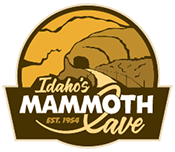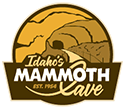Image: “Craters of the Moon National Monument” by NPS Natural Resources, Flickr
Craters of the Moon National Monument: A Lunar Landscape
Craters of the Moon National Monument is a beautiful place to visit in Idaho. This unique national monument spans a vast area of lava fields, showcasing the surreal and dramatic aftermath of volcanic eruptions that occurred over the last 15,000 years. Visitors can explore caves, cinder cones, and lava tubes on foot or drive the scenic loop to witness this otherworldly terrain. The visitor center also provides insights into the area’s geology and ecology, enhancing the experience of walking on what feels like another planet.
Craters of the Moon History
With origins tracing back to eight major eruptive periods, with the first occurring 15,000 years ago and the most recent about 2,000 years ago, the Craters of the Moon National Monument presents a landscape that’s both eerie and enchanting. It was designated as a National Monument in 1924 by President Calvin Coolidge in an effort to preserve the unique geological features found here. Since then, it has attracted scientists, astronauts, and curious visitors alike. NASA even used the area in the 1960s to help train astronauts for the Apollo missions due to its moon-like surface, providing them with a better understanding of what they might encounter in space.
Today, the Craters of the Moon National Monument stands as a testament to the raw and unforgiving power of nature and is widely regarded as one of the most beautiful and intriguing places in Idaho. The stark beauty of the black lava rock against the backdrop of the blue Idaho sky creates a striking contrast that’s a photographer’s dream. Whether you’re trekking through the caves, marveling at the strange formations from a lookout point, or simply enjoying the silence that envelops the area, a visit to Craters of the Moon offers an unforgettable experience that feels both alien and profoundly earthly. As a vivid reminder of the incredible forces that shape our natural world, the monument is a humbling and inspiring destination that echoes the ancient and ongoing story of our planet.
Fun Facts About Craters of the Moon
- Craters of the Moon was named for its resemblance to the lunar surface. Astronauts even trained here for the Apollo missions.
- It was established as a National Monument in 1924 and later expanded to a National Preserve in 2002.
- The area encompasses around 618 square miles of lava fields, making it one of the largest and best-preserved flood basalt areas in the continental United States.
- Some of the lava flows are as young as 2,000 years old, a blink of an eye in geological terms.
- The park features a range of volcanic formations, including cinder cones, spatter cones, lava tubes, and deep cracks known as fissures, making it a beautiful place to visit in Idaho.
- Visitors can explore several caves formed by lava tubes, including the popular Indian Tunnel, Boy Scout Cave, and Beauty Cave.
- Despite the harsh environment, hardy plants like the dwarf buckwheat and wildflowers thrive here.
- The park supports wildlife uniquely adapted to the harsh volcanic environment, including bats, pronghorns, and various bird species.
- Craters of the Moon is designated as an International Dark Sky Park, offering spectacular stargazing opportunities.
- The area is a living laboratory for geologists and volcanologists studying the Earth’s volcanic processes and history.
Learn More
To learn more, visit the Craters of the Moon National Park Service, where you’ll find all the resources you need to plan the perfect visit. There, you’ll find a wealth of information about its location, walking paths, overlooks, and more. Armed with this information, you’ll be ready to explore this beautiful place to visit in Idaho.
Idaho’s Mammoth Cave
Planning a trip to Idaho? Don’t forget to put Idaho’s Mammoth Cave at the top of your list. As one of the most popular things to do in Idaho, you can explore a unique and awe-inspiring underground landscape at your own personal pace with our self-guided tours. In addition to the cave, there are two privately owned museums of natural history on-site, the Shoshone Bird Museum and the Richard Arthur Olsen Museum featuring a wealth of exhibits that has earned the nickname “The Smithsonian of the Desert,” making it an unforgettable stop for the whole family.








